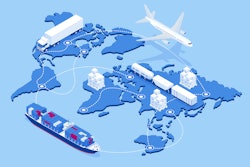
The CHIPS and Science Act of 2022 represents a $280 billion investment in domestic manufacturing, research and development. Among a range of other priorities such as national competitiveness and economic opportunities, the passage of this act signals the federal government’s acknowledgement that investing in cutting-edge technology is key to remedying recent devastating disruptions to the supply chain.
In the modern globalized economy, it is impossible to insulate the supply chain from the litany of factors that may cause delays or disturbances. Pandemic related pressures and geopolitical tensions are two of the most frequently cited reasons for supply chain issues, however, there are endless factors that could potentially disrupt or delay the supply chain. Health and safety related lockdowns, natural disasters, shifting consumer demands and political conflicts can all lead to supply chain bottlenecks that prevent individuals from procuring the critical goods and services they depend upon.
It is imperative to acknowledge that communities around the world rely on the supply chain to operate efficiently to receive the resources they need, and that recent disruptions, backlogs and delays can be a matter of life and death in some cases. Therefore, it is crucial to act with urgency to strengthen the logistics and transportation industry with tools to address and overcome inevitable challenges.
CHIPS, Science Act and IoT
The CHIPS and Science Act was written with these challenges in mind and is designed to mitigate them. One of the many ways the Act sets out to do so is by investing nearly $10 billion over the course of five years into researching a range of technologies, including the internet of things (IoT) and wireless devices.
The federal government aptly identified these technologies as solutions for supply chain related problems because they provide critical visibility into logistical intricacies, enable customization for specific needs and use cases, and offer reliability in an industry where it is desperately needed.
IoT interconnects physical objects with sensors, processing ability, software, and other technologies thereby enabling the exchange of data with other devices and systems via the Internet or other communications networks. IoT and wireless devices provide real-time insights and analytics about the location and status of assets being transported across the globe. This level of information and visibility means increased predictability in an otherwise uncertain industry.
With the most accurate and relevant data possible, supply chain disruptions can be responded to promptly or even prevented. Certain IoT solutions can process data at the edge, meaning the endpoint hardware device can analyze and process data to ensure it is delivering usable information. For example, if a temperature-controlled trailer loses power, an IoT asset tracker on that device could immediately alert the issue and provide an opportunity to fix the problem, as opposed to finding out the goods inside the trailer were spoiled and unusable once arriving at the destination. With IoT asset tracking hardware and software solutions, real-time, actionable data can be collected and utilized.
The global supply chain is inherently enormous and complex, which is why the government is investing in a variety of projects to combat bottlenecks. Due to the vast array of goods and services being transported across the world via land, sea and air, any service or tool that aims to remedy supply chain issues must be customizable.
Certain IoT and telecommunication providers enable a high degree of customization based on the user’s need. It is crucial to understand that some operators may require frequent updates on the status of their goods, while others may prefer a few transmissions per day. The number and type of sensors used should also be customizable. However, the greatest possibility for personalization comes in the form of the software platform, or application library, that displays the data transmitted by the hardware devices. With unified application program interfaces (APIs), developers are free to create and integrate applications that support their specific needs. Customization means business owners are paying only for the services they need; those savings can and should be passed on to the customer.
Reliable Coverage
Another critical factor to consider when seeking to bolster the global supply chain is reliable coverage. Modern society stretches to all corners of the Earth, and even the most remote communities rely on the delivery of essential goods. Visibility and customization are only useful if they are consistent regardless of geographic location, particularly when it comes to an industry such as logistics and transportation which must navigate the largest oceans and desolate landscapes. In remote environments, satellite-based connectivity prevails when terrestrial coverage is lacking.
Reliability, visibility and customization must be prioritized when utilizing the funding made available in the CHIPS and Science Act in order to effectively combat supply chain challenges with wireless and IoT devices. Paramount in any discussion of the supply chain must be the foundational understanding that families and communities depend on the supply chain operating effectively, and it is a collective responsibility to deliver a reality where all people can have faith that the resources, they rely on will be accessible no matter what.



















